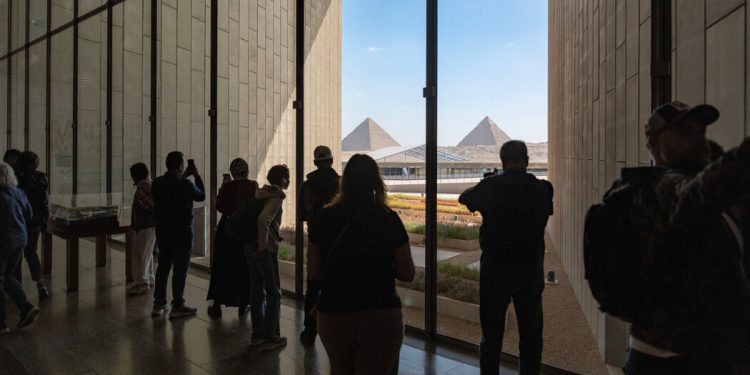Ah, the chaos of Cairo. Dusty whispers of ancient times wrestling with modern clamor. One sunny afternoon, I found myself drawn to the city’s edges, not by the usual stone giants — the pyramids — but by a new spectacle. A museum made grand by both its ambition and its infamous delays.
This place, the Grand Egyptian Museum, has the opening saga of a cursed legend. Years stretched on like a desert sunset, promising completion yet leaving us waiting. Stories of missteps abound — cash vanished, wars erupted nearby, the world paused from a pandemic. It’s as if it wants to rival the pyramids a mile away in both time and tales of toil.
Now, finally, it’s mostly open. Sorta. I wandered in, greeted not by King Tut’s gold (not yet displayed), but by the jaw-dropping presence of Ramses II — a rocky titan found lounging sideways centuries ago, now standing tall in welcoming defiance.
Stepping inside, each exhibit was a journey, like leafing through brittle pages of history without care for order. Figurines for the dead, crocodiles mummified with all their secrets, wigs woven with echoes of their wearers. Odd relics yet incredibly alive, like whispers of a past that refuses to die quietly.
Climbing the museum’s grand staircase felt like ascending time itself — each step a reminder of the footsteps that came before. At the top? An ephemeral moment framed in glass: the pyramids, standing as guardians over history’s restless march.
This museum, part of a Cairo trifecta, is undoubtedly worth the visit. Sure, it might share space with the old Egyptian Museum, cozy in Tahrir Square with its dusty charm, or the National Museum reveling in royal mummies — yet this new giant feels different. Built on dreams, halted by nightmares, now standing resilient.
It’s chaotic, still incomplete, but maybe perfection isn’t the goal. Maybe it’s the journey, the bumps and bruises — those raw, human parts — that make it real. So go, get lost in its halls, lose yourself in its stories. Who knows, maybe you’ll find your own story written among the ancient stones.


















